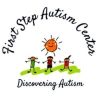Introduction: Autism Spectrum Disorder (ASD) is a complex condition with a range of contributing factors. One of the questions that often arises among parents with an autistic child is whether there is an increased probability that subsequent children will also have autism. In this blog post, we will explore the factors that influence the likelihood of siblings being affected by autism and shed light on this important topic. Re-Occurrence of Autism in Siblings.

1. Genetic Influences: Understanding the Genetic Component Autism has a strong genetic component. Research indicates that if a family has one child with autism, the likelihood of a second child being affected is higher than in families without an autistic child. However, the exact probability varies depending on several factors.
2. Recurrence Risk: Estimating the Probability The recurrence risk for siblings depends on factors such as the number of affected family members, the degree of relatedness, and whether the affected child is a fraternal or identical twin. Studies suggest that the recurrence risk can range from approximately 2% to 18%.
3. Environmental Factors: The Role of Environmental Influences While genetics plays a significant role, environmental factors also contribute to autism risk. These factors can vary greatly and might include prenatal and perinatal conditions, exposure to certain substances, and parental age.
4. Seeking Professional Guidance: Navigating the Uncertainties It’s important to remember that every family is unique, and there is no one-size-fits-all answer to the question of autism recurrence. If you have concerns or questions, seeking guidance from a medical professional or genetic counselor can provide valuable insights into your specific situation.
5. Early Intervention and Support: Empowering Families Regardless of the probability, it’s essential to focus on providing early intervention, support, and resources for all children. Early diagnosis and intervention can make a significant difference in a child’s development, whether they are on the autism spectrum or not.
6. Conclusion: A Journey of Love and Support Understanding the probability of siblings being affected by autism is a complex and multifaceted topic. While genetics and environmental factors play a role, each family’s journey is unique. What remains constant is the love, support, and empowerment that parents provide to their children.
In conclusion, while there is an increased risk of siblings being affected by autism, it’s crucial to approach this topic with a balanced perspective. Seek professional guidance, embrace early intervention, and remember that every child, regardless of their developmental path, deserves love, support, and the opportunity to thrive. Re-Occurrence of Autism in Siblings.
For more information and resources on autism, visit our website at www.fsautismcen.org. Together, we can navigate this journey with knowledge, understanding, and unwavering support.

